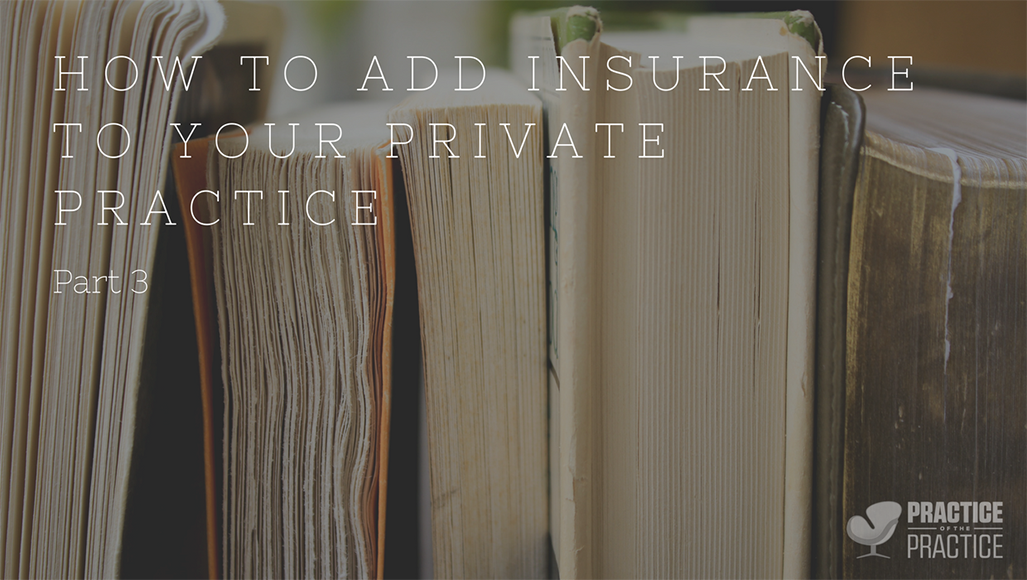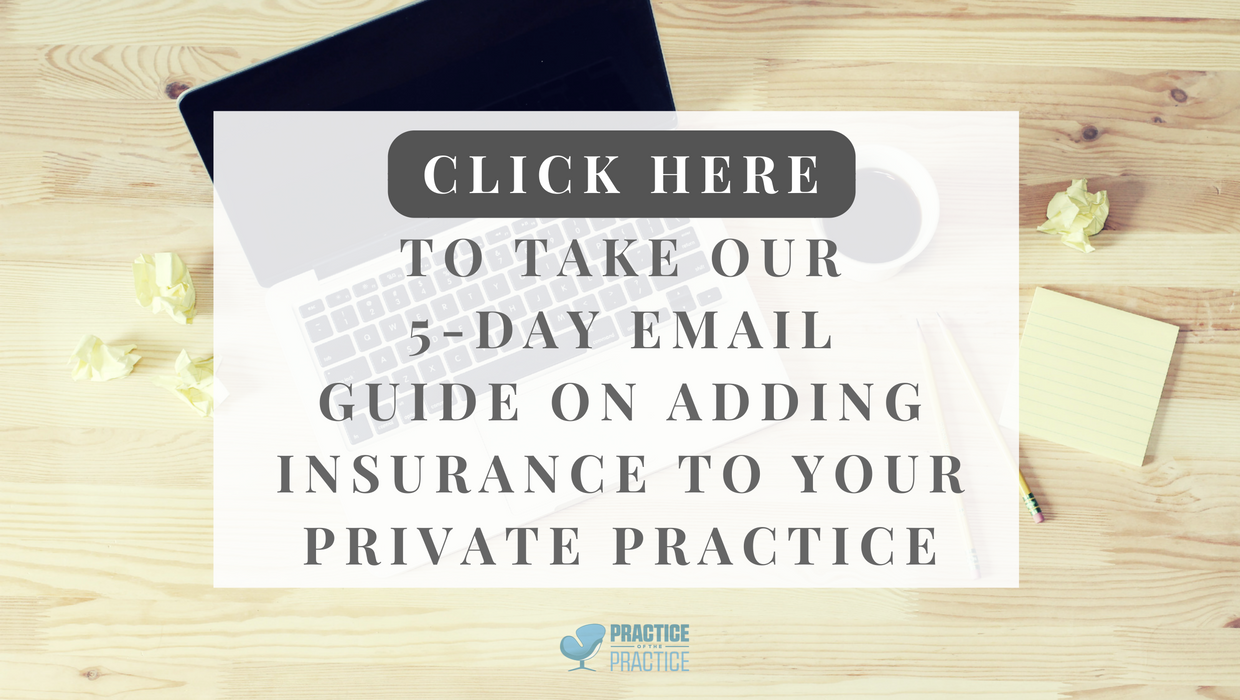When I first started in private practice, I didn’t put much thought into whether or not I would take insurance. I assumed, based on my experience in community mental health, that everyone had to take insurance to have a successful practice. Yet, I didn’t spend much time considering which insurance panels to be on. I just transferred all of my credentials from the agency to my new practice.
What I Wish I Would Have Done Differently
In retrospect, I wish I had been better informed. Particularly about the strategy of how to make decisions about insurance panels to my advantage. Now, 18 months later, I feel resentful and frustrated with one company in particular (who shall not be named). This, every time I see how little they pay or when they screw up one of my claims.
If I could go back in time, I would have only paneled myself with the three highest paying insurances in my area. Ones that also fortunately pay quickly and make few mistakes. These are the three that many folks in my geographical location have as well. And I would have chosen not to be credentialed with the rest. Either because their pay is low or they take up a lot of administrative time due to their disorganization or rules.
I have a new plan. I will encourage clients, whose insurance I don’t take, to submit their receipt so the services are billed “out of network”. Let me explain more in detail what this means.
How Do You Bill “Out of Network”?
Many people don’t understand how “in network” and “out of network” insurance benefits work. When you are paneled with an insurance company, you are now considered “in network”. You agree to that company’s contracted reimbursement rate and you can’t charge the client more than that.
When you are not paneled with an insurance company, you can choose to bill (either you or the client) as an “out of network” provider. Many insurance plans have these “out of network” benefits. Typically, the amount the client has to contribute is higher than their “in network” benefits. To use “out of network” benefits either you could bill the insurance company or you can provide a “superbill”. This is a detailed receipt of the session which the client can submit it for reimbursement.
This is an advantageous option for the clinician because you can still charge your full fee and not have to accept the insurance company’s reimbursement rate. For the client, it may make it easier for them to pay your full fee knowing they will get some reimbursement later.
So How Do You Get Off of a Bad Insurance Panel?
I am at a point now where I am planning to break up with that low-paying insurance panel I mentioned earlier. Typically, insurance companies require a letter stating you want to terminate your contract with them. Contact provider relations and find out where you need to send it.
Keep in mind, most companies have a set period of time (for example, 90 days) between when you send the letter and the time they officially terminate the contract. This is so you have time to inform your clients and make appropriate referrals if they cannot continue to see you.
How Do You Know Which Insurance Panels, in Your Area, Are Worth It?
Talk to other therapists in your area and find out which insurance panels pay the best. Also which ones pay quickly/involve the least amount of hassle administratively. Obviously, folks are going to have different opinions about this. But if you ask enough people you will probably see a pattern.
Insurance varies a lot by geographical region and also by state. There may also be smaller companies in your area, that are worth being paneled with, that you may not know about until you start asking around.
My Parting Words of Advice…
From my experience in private practice it is probably not necessary to be on “every” insurance panel possible to have a full caseload. Be strategic about which ones you want to accept to minimize administrative headaches and maximize your business profits.


